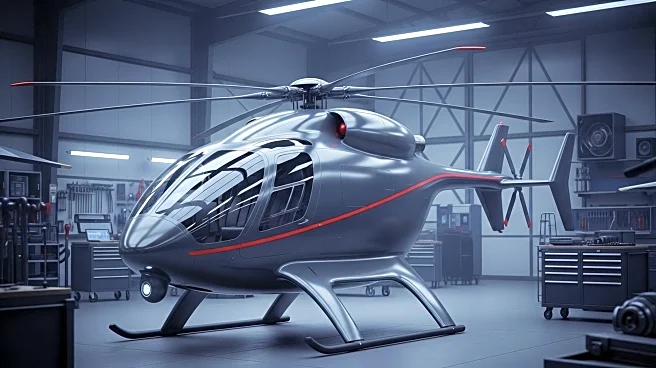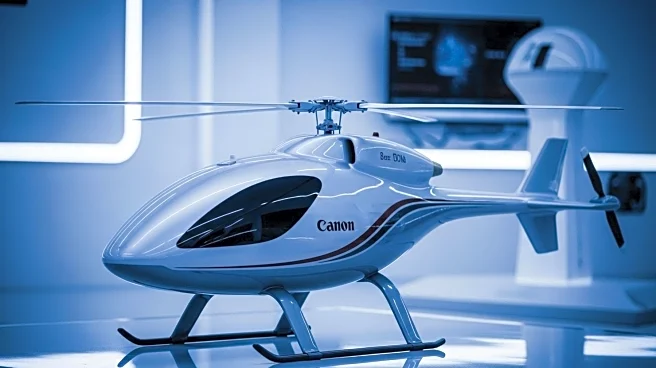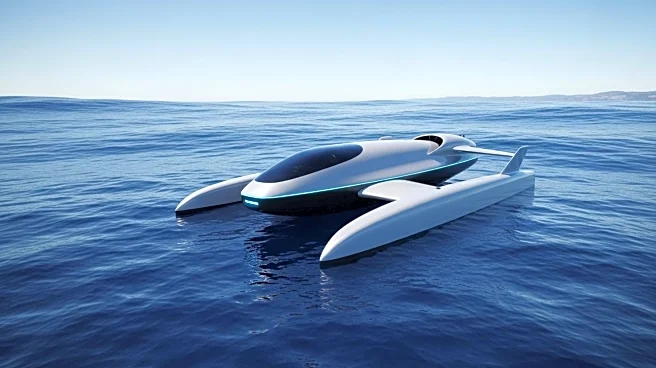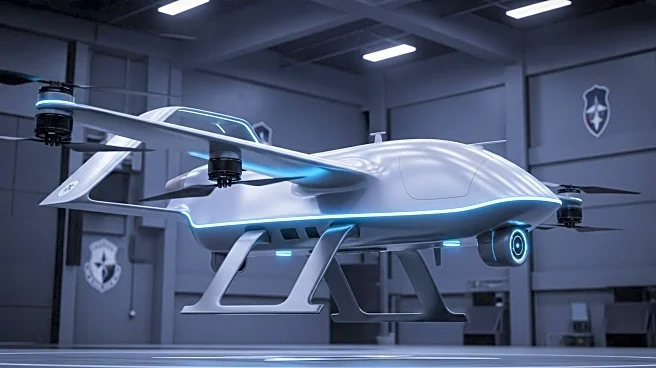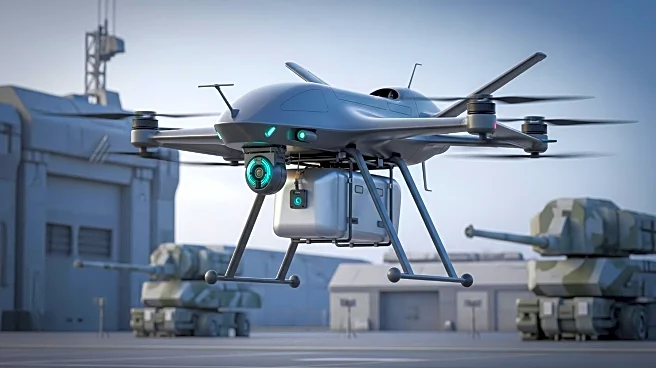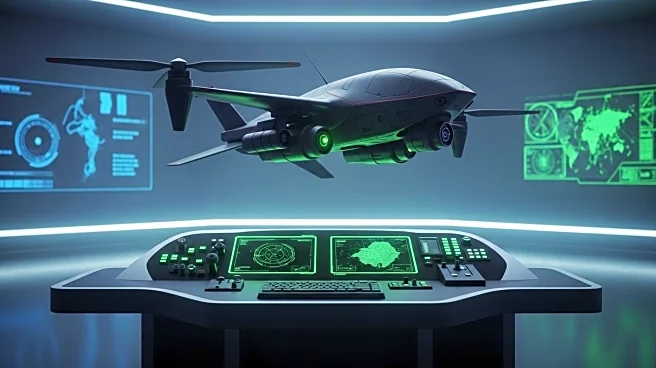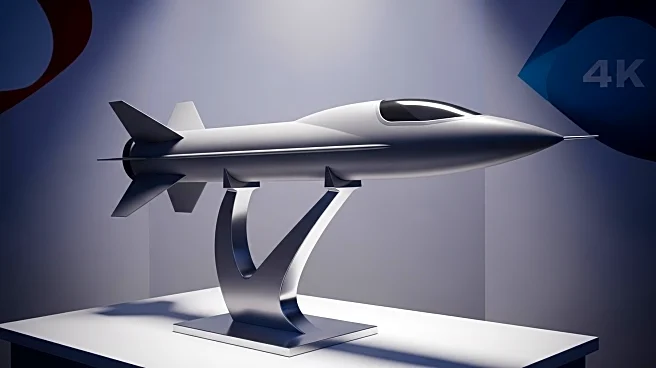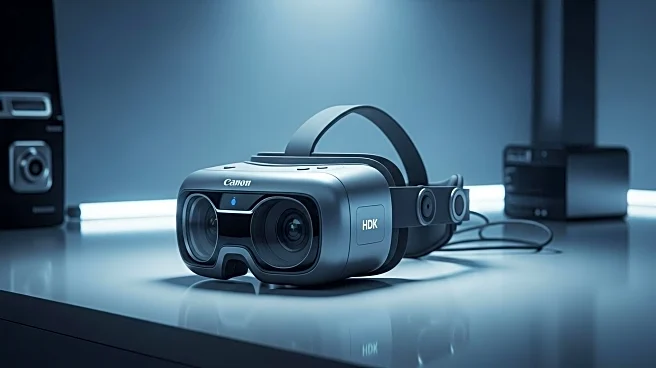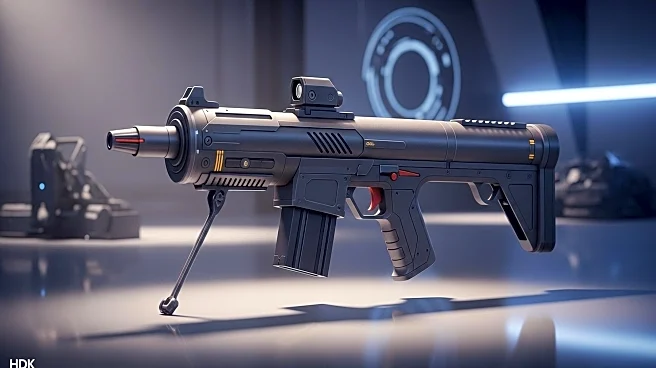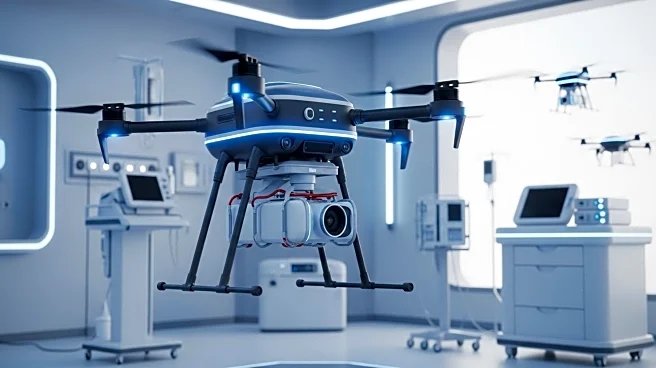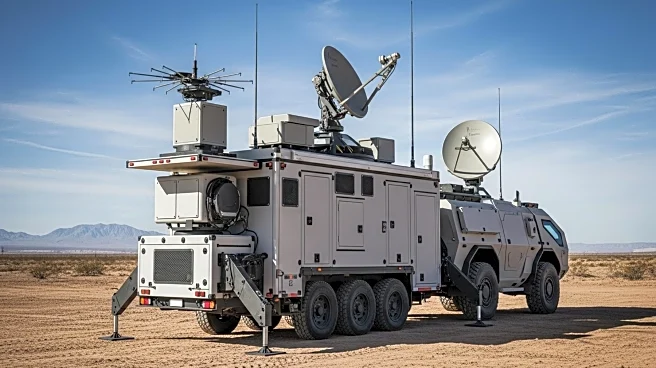What's Happening?
Sikorsky, a subsidiary of Lockheed Martin, has introduced an unmanned aircraft system version of the UH-60 Black Hawk, designated as the S-70 UAS and nicknamed the 'U-HAWK'. This development was showcased at the Association of the U.S. Army's conference. The transformation of the Black Hawk into a fully unmanned aircraft was completed in less than a year, according to Ramsey Bentley, Sikorsky's director of strategy and business development for advanced programs. The U-HAWK has been reconfigured by removing the cockpit and crew stations, increasing the aircraft's volume by over 20%. This redesign allows the U-HAWK to carry various payloads, including unmanned ground vehicles and artillery rocket systems, supporting combat operations and logistics.
Why It's Important?
The introduction of the U-HAWK represents a significant advancement in autonomous military aviation, providing the U.S. Army with more flexible and versatile logistics and mission support options. This development comes at a time when the Army is focusing on modernizing its fleet and integrating more autonomous systems. The U-HAWK's ability to operate fully autonomously with Sikorsky's Matrix technology could enhance operational efficiency and reduce the need for human pilots in certain missions, potentially lowering risks and costs associated with manned flights. The platform's versatility in carrying different payloads also offers strategic advantages in various combat and support scenarios.
What's Next?
Sikorsky plans to conduct demonstration flights of the U-HAWK next year to further refine the aircraft's design and capabilities. The company aims to showcase the U-HAWK's multi-role, multi-mission capability during the AUSA exhibition with different loadouts each day. As the Army continues to explore autonomous systems, the U-HAWK could play a crucial role in future logistics and combat operations, providing commanders with more flexible options. The ongoing development and testing of the U-HAWK will likely influence future procurement decisions and strategies within the U.S. military.
Beyond the Headlines
The development of the U-HAWK highlights the growing trend towards unmanned and autonomous systems in military operations. This shift raises ethical and operational questions about the role of human oversight in autonomous missions and the potential implications for military strategy and personnel. As autonomous systems become more prevalent, there will be increased focus on ensuring these technologies are reliable, secure, and capable of operating in complex environments.
